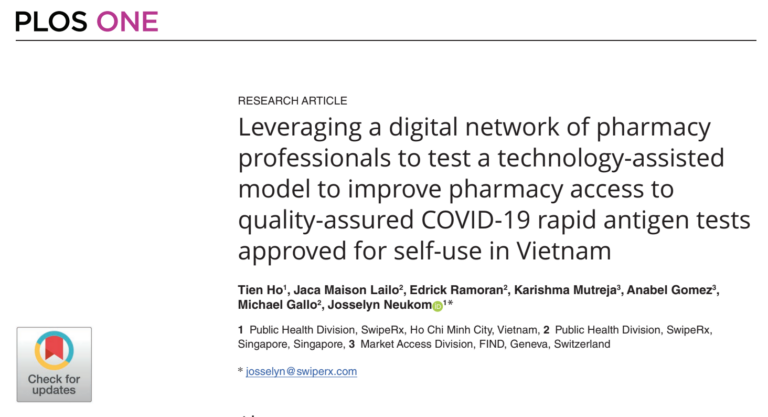mClinica’s SwipeRx – Southeast Asia’s largest digital network of pharmacy professionals – supports women pharmacists through community and free continuing education. Before SwipeRx was available, pharmacists had to attend offline training events, often held in metropolitan areas. These events required that pharmacists pay to attend, take time off from work, and travel to training centers (sometimes far away) to fulfill their legal CPD requirements. This imposes a disproportionate burden on women, rural, and lower-income pharmacy professionals – a burden that SwipeRx seeks to resolve.
The latest figures reveal that out of the 101,728 pharmacy professionals using mClinica’s SwipeRx, a whopping 70% of users are female. But beyond supporting and developing women pharmacists, the bigger question is how they are impacting healthcare and those around them.
Here are 5 ways that women pharmacists in Southeast Asia and the rest of the world are making a difference:
1) Women pharmacists continue to pave the way for female participation in science
Based on data from 45 countries and territories, women represent 59% of actively practicing pharmacists. This female dominant field demonstrates the capability of women in healthcare professions, which in turn opens doors for women in other STEM careers. This is especially important given that hostile male-dominated work environments are one of the main reasons that women choose to leave STEM jobs. Increased professional female presence, like that seen with women in pharmacies, is necessary to counterbalance this phenomenon elsewhere.
2) They elevate the status of the pharmacy profession through education
A much higher percent of women are graduating from pharmacy school each year, effectively replacing the men who are retiring from the baby boomer generation. Many of these women are furthering their knowledge and confidence in the profession by pursuing additional certificates and training. In fact, since December 2017, mClinica has provided free continuing education to more than 4,000 female pharmacists in Southeast Asia.
3) They act as role models in their communities
In Southeast Asia, 81% of pharmacists work in independently operated community pharmacies. Independent pharmacy ownership offers women the possibility to take on leadership roles and to become a spokeswoman for their communities. Women in ownership positions have a great deal of autonomy and are ideally placed to step up and speak out on behalf of the individuals they serve, thereby establishing themselves as indispensable and inspiring community leaders.
4) They bring a diversity of perspectives to healthcare
Women pharmacists bring to the table unique viewpoints gained through their daily experiences as women. In fact, one study revealed that women regarded themselves as higher in agreeableness, warmth, and openness to feelings, whereas men rated themselves higher in assertiveness and openness to ideas. Both ways of thinking are needed, making women pharmacists a vital contribution to the otherwise very male-dominant world of medicine.
5) They help propel the economy forward by closing the gender wage gap
Evidence points to the fact that gender diversity is a key business driver and leads to increases in national GDP. In their Strategy 2020 proposal, The Asian Development Bank (ADB) stated that, “without harnessing the talents, human capital and economic potential of women, Asia’s goals of poverty reduction and sustainable development will not be met.” The Philippines is currently ranked ninth in the world with respect to gender equality— perhaps partly thanks to their large female pharmacist workforce!








